Laurie Gorelick: Steampunk Style
January 15, 2013
How many of you know that some of today’s home furnishing styles reflect a unique cult aesthetic known as Steampunk? Originating in the futuristic fantasies of 19th century authors Jules Verne and H.G. Wells, Steampunk attempts to blend the disparate styles of the Victorian, Industrial and Technological Ages. It gained momentum in the late 1980s, early 90s, and now infuses everything from fiction to fashion and design. Imagine trying to combine Industrial Age gadgets and machinery—as primitive as they may seem today—with LCD monitors, and then cloak them in the dark oak and fringed, tufted velvets of the Victorian Age. That’s Steampunk.
Typical in Steampunk design are rusticated metals, industrial salvage and reclaimed woods. Pieces are accessorized with vintage hardware, early aviation and steamship ephemera, valves, gears and gadgets. But to be authentic, Steampunk must incorporate modern technology. So the essence of Steampunk is a fusion of opposites. It’s the marriage of past and present, man and machine, form and function.
A guru of Steampunk design happens to live locally in Sharon, Massachusetts. As Bruce Rosenbaum and his wife, Melanie, began decorating their circa 1901 Victorian house, what evolved was a vernacular home on the outside but something extraordinary on the inside. In Bruce and Melanie’s house, mostly everything has been repurposed from Victorian antiques. A late 1800s wood-burning stove is transformed with a modern glass cook-top. A Victorian pipe organ has become a computer workstation. Bruce and Melanie’s home is so famous—or infamous—it’s appeared on MTV’s “Extreme Cribs.”
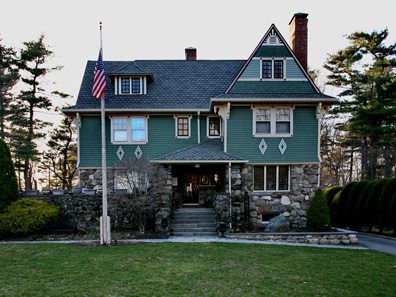 The exterior of the Rosenbaum house gives away little about what’s inside. Photo courtesy of Bruce Rosenbaum
The exterior of the Rosenbaum house gives away little about what’s inside. Photo courtesy of Bruce Rosenbaum
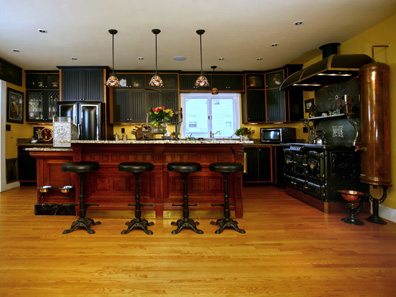 The kitches fuses a Victorian feel with modern comforts. Photo courtesy of Bruce Rosenbaum
The kitches fuses a Victorian feel with modern comforts. Photo courtesy of Bruce Rosenbaum
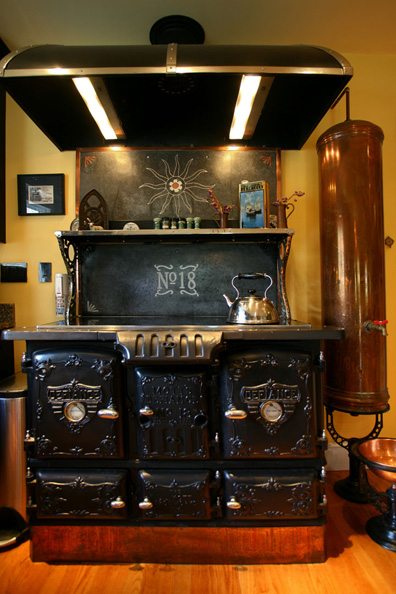 The antique wood stove features an electric cooktop. Photo courtesy of Bruce Rosenbaum
The antique wood stove features an electric cooktop. Photo courtesy of Bruce Rosenbaum
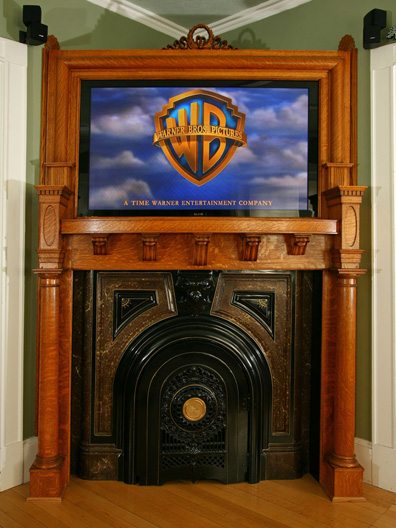 The computer workstation is nothing if not creative. Photo courtesy of Bruce Rosenbaum
The computer workstation is nothing if not creative. Photo courtesy of Bruce Rosenbaum
What is the attraction to Steampunk? According to Bruce Rosenbaum, it’s a response to today’s “throw-away society.” Specifically, technological advancements have robbed many things of value and relevance while homogenizing the design of what’s left. Steampunk satisfies the nostalgia for things that are unique and intricate. It also enables its followers to take items of value, give them a purpose and have them tell a story. You could also say that Steampunk is part and parcel of the green design movement.
Although Bruce and Melanie’s creations are extreme, evidence of Steampunk in mainstream design is abundant. Industrial chic? That’s Steampunk. Here are a few examples:
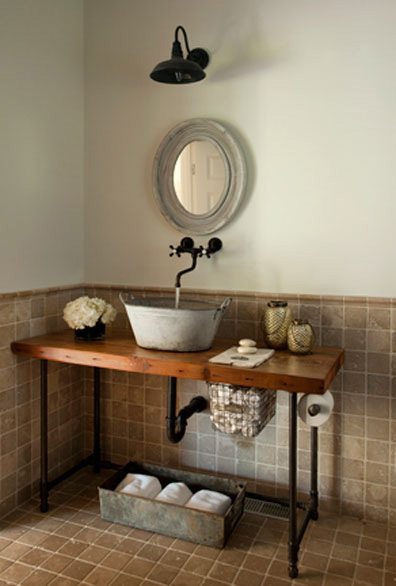 Liz Stiving Nichols shared this photo of a vintage washbasin she used  in a client’s home on the New England Home blog back in October. Photo by Eric Roth
Liz Stiving Nichols shared this photo of a vintage washbasin she used  in a client’s home on the New England Home blog back in October. Photo by Eric Roth
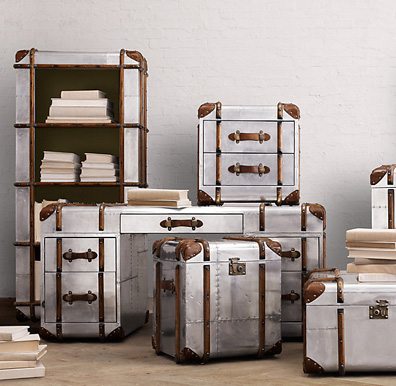 The Richards’ Metal collection from Restoration Hardware. Photo courtesy of Restoration Hardware
The Richards’ Metal collection from Restoration Hardware. Photo courtesy of Restoration Hardware
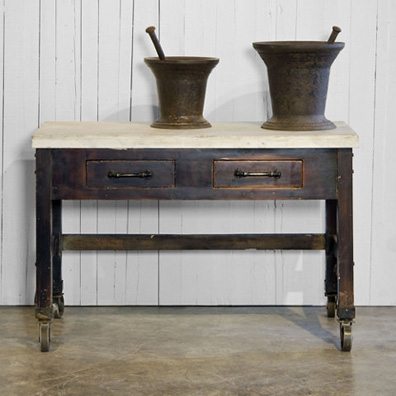 Ralph Lauren Printer’s Table from the RLH Collection. Photo courtesy of Ralph Lauren
Ralph Lauren Printer’s Table from the RLH Collection. Photo courtesy of Ralph Lauren
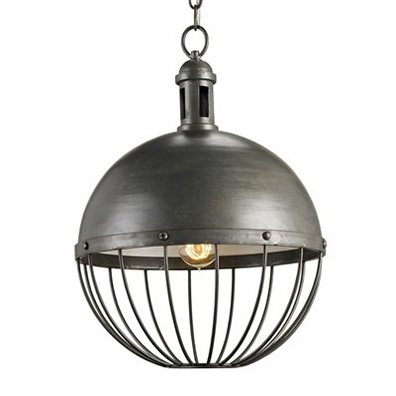 The Verne Pendant by Currey and Company. Photo courtesy of Currey and Company
The Verne Pendant by Currey and Company. Photo courtesy of Currey and Company
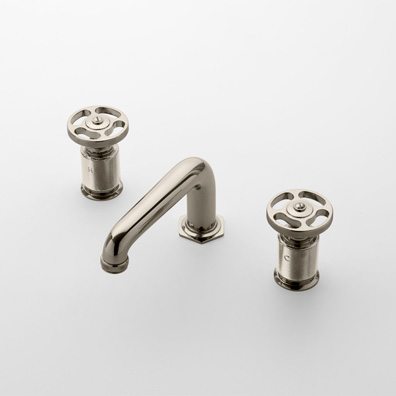 This lavatory faucet with metal wheel handles is part of the Atlas Collection by Waterworks. Photo courtesy of Waterworks
This lavatory faucet with metal wheel handles is part of the Atlas Collection by Waterworks. Photo courtesy of Waterworks
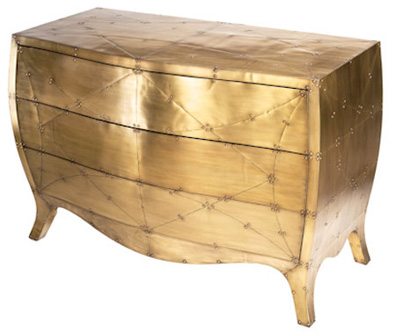 Oly Amelia chest. Photo courtesy of Oly Studio
Oly Amelia chest. Photo courtesy of Oly Studio
If these alone aren’t proof that Steampunk has entered the mainstream, look at Sherwin-Williams’s 2013 Color Forecast: Opposites Attract. The title alone is philosophically Steampunk. At one extreme of this color forecast is the “high-voltage” palette, reflecting the electric colors of modern technology. At the other is “midnight mystery” which is decidedly Steampunk. Its rustic reds, golds, deep sea blues, murky greens and shadowy browns are evocative of Victorian and Edwardian times. Says Heather Bourgeois, designer account executive at the Boston Design Center for Sherwin-Williams, the “midnight mystery” palette is a throw-back to when art, science and technology merged. According to Heather, given the concentration of leaders in art, science and technology in this area, it makes sense that not only this color palette, but Steampunk as a style, has regional appeal.
 The color chart from Sherwin Williams “Midnight Mystery” palette. Photo courtesy of Sherwin Williams
The color chart from Sherwin Williams “Midnight Mystery” palette. Photo courtesy of Sherwin Williams
Everyone can go a little Steampunk. Start with distressed leathers, brass nail heads and riveted metals. Add some gears, valves and old-machine parts. You’re on your way. Want to learn more? Watch for announcements from the Boston Design Center regarding a spring seminar sponsored by Sherwin-Williams and ModVic, the design company launched by the Rosenbaums, focusing on Steampunk culture and design.
-Laurie Gorelick
Laurie Gorelick is a New England-based interior designer whose practice focuses on residential and hospitality spaces. With over 15 years of experience, Laurie’s designs have appeared in print and digital media and several show houses including the most recent 2012 Junior League of Boston Show House. Her blog, which she began one year ago, has been recognized by House Beautiful magazine and voted as one of the top interior design blogs. To learn more about Laurie Gorelick Interiors and read the blog, please visit www.lauriegorelickinteriors.com.
Share
![NEH-Logo_Black[1] NEH-Logo_Black[1]](https://b2915716.smushcdn.com/2915716/wp-content/uploads/2022/08/NEH-Logo_Black1-300x162.jpg?lossy=1&strip=1&webp=1)







You must be logged in to post a comment.